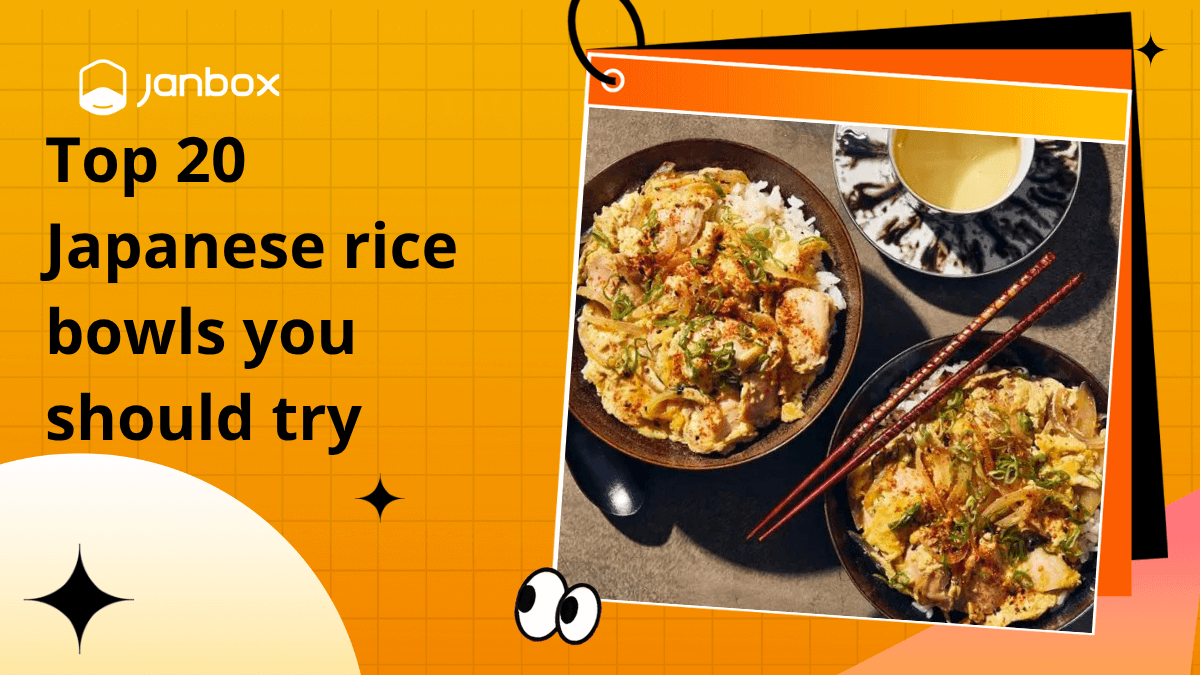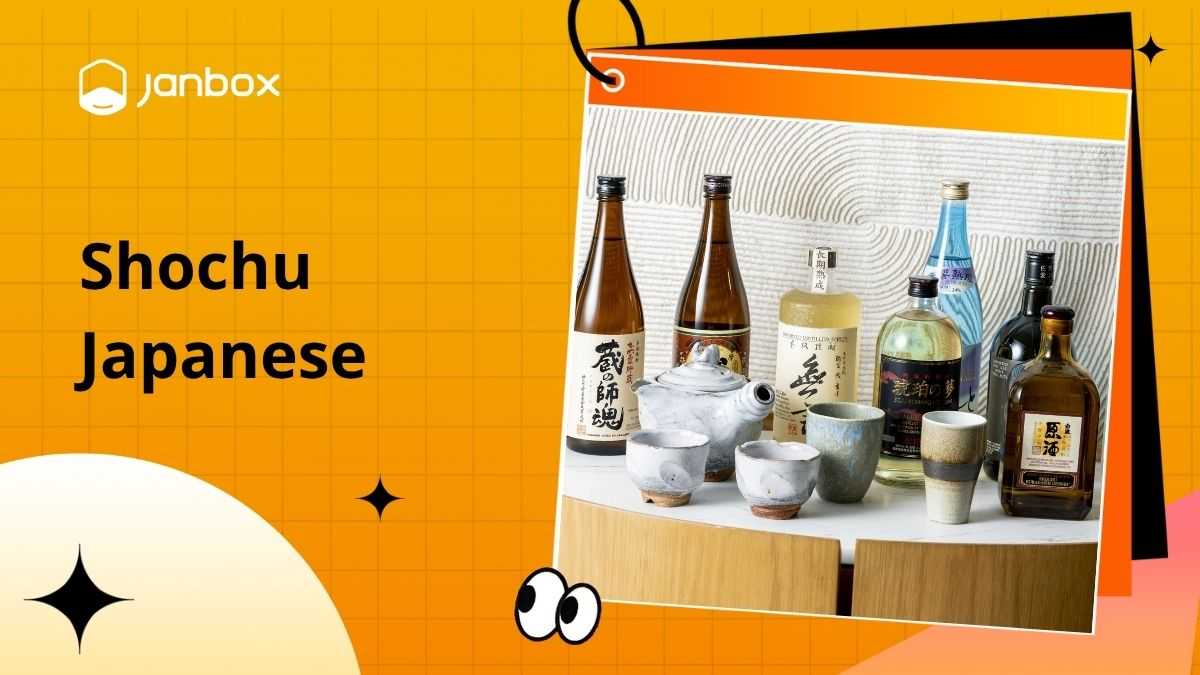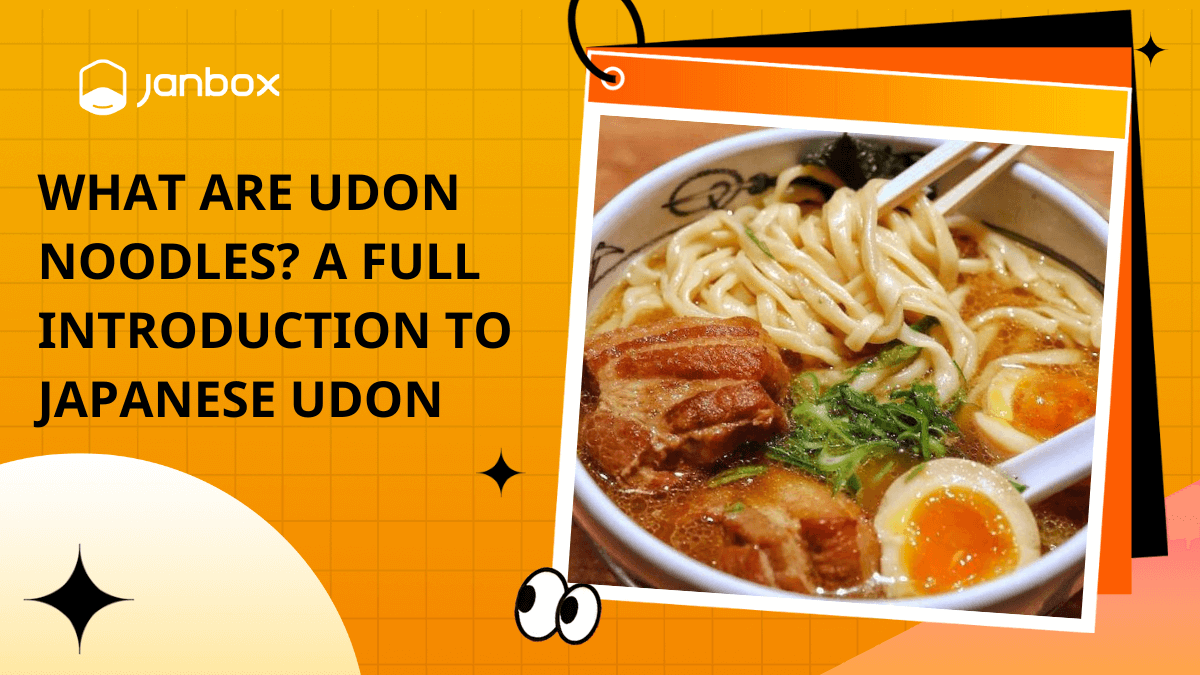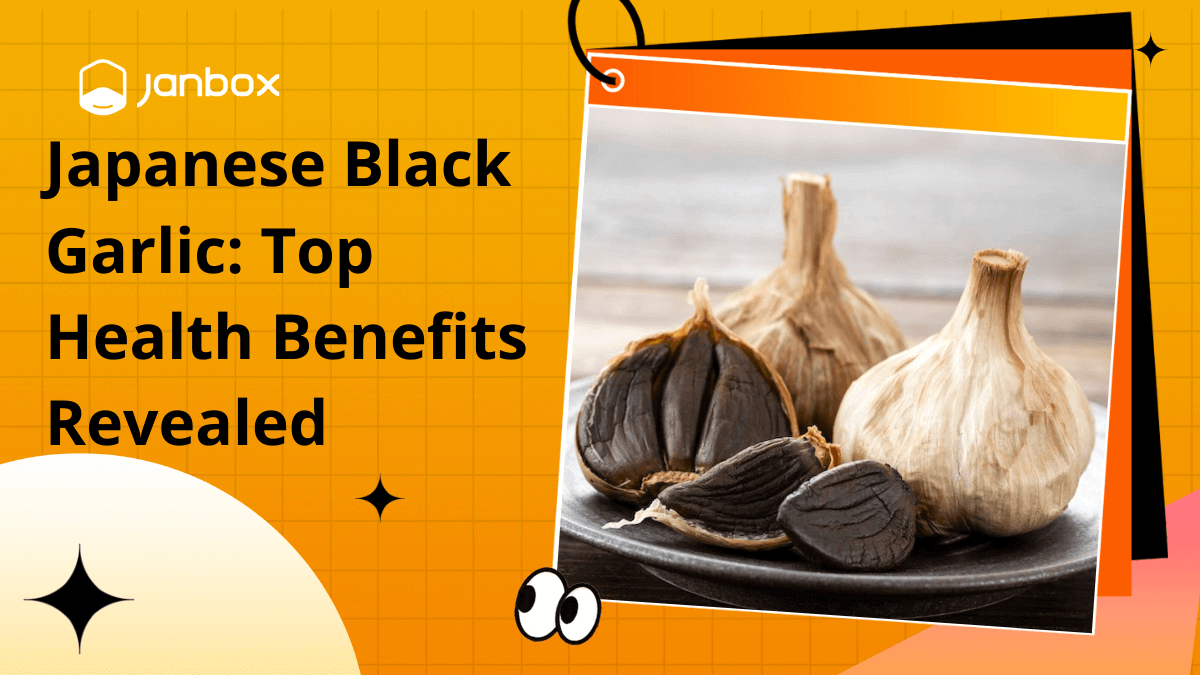Japanese rice bowls are always packed with nutritious ingredients that won’t leave you feeling hungry afterward, whether you’re looking for healthy dinner options or filling vegetarian meals. Each family member may choose what they wish to include or exclude, making this a fail-safe family dinner concept. So, without further ado, learn everything there is to know about Japanese rice bowls right now.
1. Types Of Japanese Rice Bowls And Applications Of Each Type
Japan is home to nearly endless regional styles of donburi. However, there are a few types of traditional Japanese rice bowls that you’re likely to find wherever in Japan you travel. Here are 15 of them.
1.1 Oyakodon (Chicken and Egg Bowl)
Pronunciation: oh-yah-koh-don
This donburi’s name translates as “parent-child rice bowl”. While the moniker is a tad ghoulish, it is unquestionably delicious.

Oyakodon is chicken, onion, and egg cooked in a mirin, soy sauce, sake, and sugar broth and served over rice. The egg is runny, making it easy to incorporate into the rice.
This protein-packed home-style dish scores for its simplicity as a twist on the chicken-and-egg combo. It’s filling but healthful, making it a go-to lunch to kick off the week.
1.2 Gyudon (Beef Bowl)
Pronunciation: gew-don
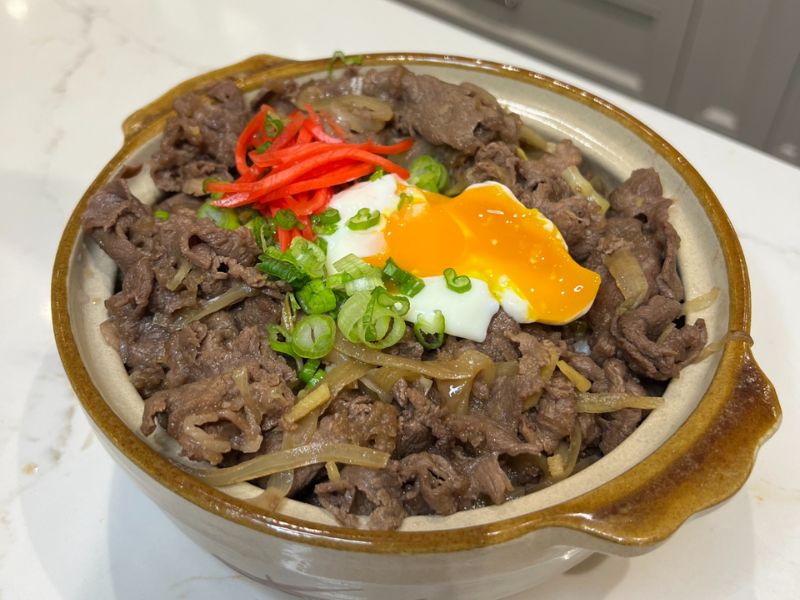
Gyudon (beef bowl) is one of the best Japanese rice bowls, featuring thinly sliced beef cooked with onion in a savory-sweet sauce. This type of donburi can be found at a number of restaurants, including convenient, low-cost chain restaurants.
Gyudon is created with thinly sliced beef cooked in a mixture of dashi, soy sauce, and mirin. It’s frequently accompanied by beni shoga, a type of pickled ginger that ranges in color from light pink to brilliant crimson. The sweet-savory flavor of the meat pairs well with the refreshing acidity of the ginger. As shown above, it can also be topped with a soft-boiled egg.
>>> Read more: 15+ Unique Japanese Vegetables you may not find it anywhere
1.3 Vegan Poke Bowl
Savory pan-fried tofu, colorful veggies, and brown rice are all included in this vegan poke bowl. Everything you require for a filling, wholesome dinner is there. Just 20 minutes to prepare!
1.4 Chicken Katsudon
Pronunciation: kah-tsuu-don
Katsudon is identical to oyakodon, except instead of chicken, tonkatsu—breaded deep-fried pork cutlets—is used. This is a wonderfully hearty dinner that is ideal for a day spent traveling!
1.5 Soy-Glazed Eggplant Donburi
A steaming bowl of rice is served with thinly sliced eggplant that has been pan-fried until golden brown and covered in sweet soy sauce. The most opulent vegan rice dish someone could ever whip together for a weekday meal.
1.6 Mapo Tofu

When you’re in the mood for something daring, this Japanese Tofu recipe won’t let you down. It combines silken tofu with ground pork mixture and is cooked in an incredibly delicious sauce and served in a rice bowl fashion. Children can eat it since it is mellower and less spicily prepared than Sichuan-style mapo tofu.
1.7 Pork Curry Donburi
Pork Curry Donburi is a hearty Japanese dish featuring tender pork slices atop steamed rice, smothered in a rich, spicy curry sauce. Infused with aromatic spices, vegetables, and savory broth, it’s a comforting, flavorful meal perfect for quick lunches or cozy dinners, blending Japanese and curry traditions.
1.8 Tendon (Tempura Donburi)
Pronunciation: tehn-don
The ‘ten’ in ‘tendon’ actually derives from tempura, despite the fact that when written out in English, the name of this donburi appears like the name of the tissue that joins muscle to the bone! Depending on the restaurant or the order, the tempura you receive in your rice bowl may vary, but a typical type is a mixture of vegetable tempura and a piece of shrimp tempura.
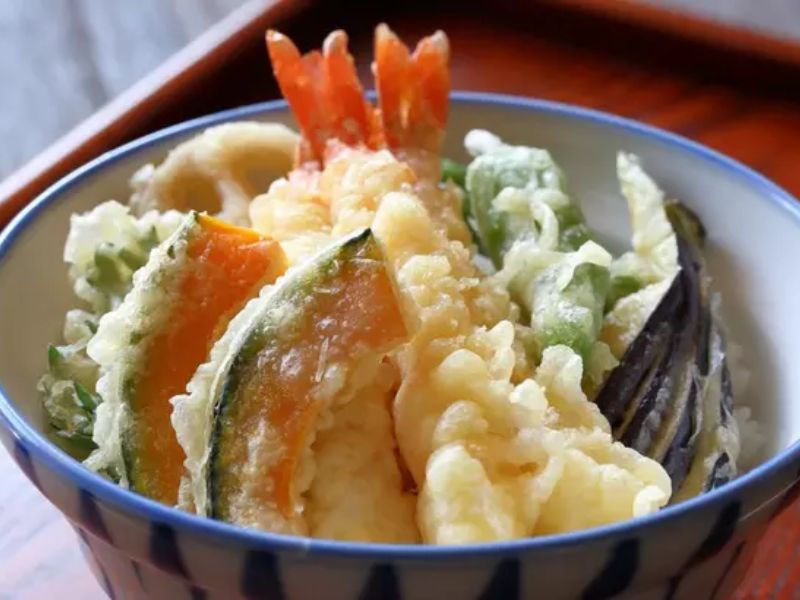
Ten Don’s recipe for golden, crispy shrimp and vegetable tempura, served over steamed rice and drizzled with tentsuyu (tempura dipping sauce), is a great treat for a memorable Saturday night dinner. Enjoy this dish with a cup of miso soup and a side of cooling salad for a complete dinner.
>>> Read more: 10 common types of Japanese seaweed
1.9 Soboro Don (Ground Chicken Bowl)
Soboro Don is a comforting Japanese dish featuring fluffy steamed rice topped with seasoned ground chicken, scrambled eggs, and sometimes green vegetables. The chicken is simmered in a sweet-savory soy-based sauce, creating a harmonious blend of flavors. This colorful, protein-packed bowl is perfect for a quick, satisfying meal with a balance of textures and tastes.
1.10 Salmon Sashimi Bowl
Salmon Sashimi Bowl is a vibrant Japanese dish showcasing fresh, raw salmon slices delicately arranged over a bed of sushi rice. Accompanied by soy sauce, wasabi, and pickled ginger, it offers a clean, umami-rich flavor. Garnished with nori and sesame seeds, this bowl is a refreshing, healthy choice for sushi lovers.
1.11 Niratama Donburi
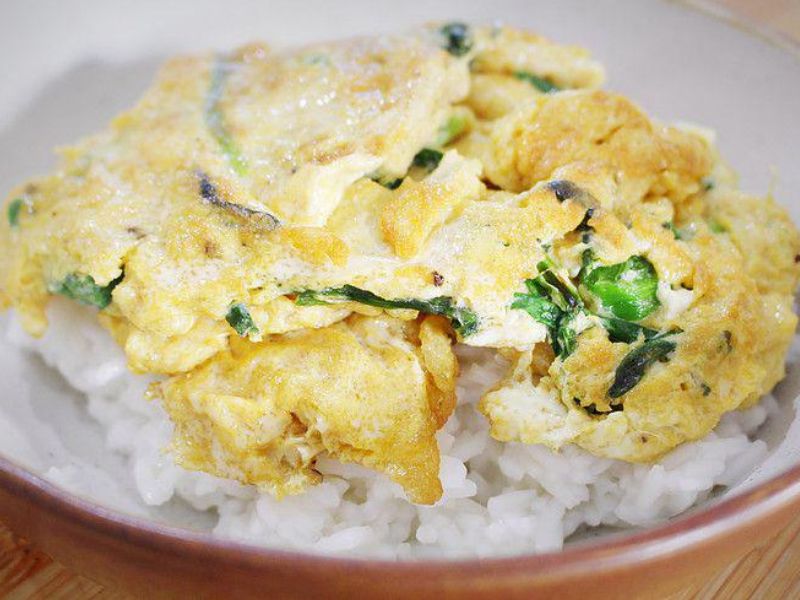
Niratama Danburi, which is served with hot rice and a soft, fluffy egg stir-fry with garlic chives, is cozy and especially pleasant. The straightforward recipe is distinguished by the strong garlic chives flavor. The flat, deep green garlic chives, commonly referred to as Chinese chives, are available at Asian produce markets and grocery stores in your area. You can also substitute ordinary chives, spinach, or other greens in its place.
1.12 Unadon
Pronunciation: oo-na-don
Unadon is a specialty in Japanese cuisine. Unadon, which combines the words “eel” (unagi) and “donburi” (don), is a dish created with eel fillets that have been coated in a sweet-salty tare sauce. Even though eel is pricey seafood, you must taste this donburi. Unagi which has been expertly grilled is served with warm rice and a sweet caramelized sauce that is simply tempting. Unagi can be purchased already grilled or can be quickly grilled and vacuum-packed if you want to prepare unadon at home.

Order an una-ju if you want to indulge in even more eel. It shares the same idea as the unadon but is served in a box shape called a ju and frequently contains more eel than the unadon.
1.13 Poke Bowl
Poke Bowl is a vibrant Hawaiian dish featuring diced raw fish, typically tuna or salmon, served over sushi rice or greens. Tossed with soy sauce, sesame oil, and toppings like avocado, seaweed, and sesame seeds, it offers a fresh, umami-packed flavor. This customizable, healthy bowl is perfect for a light, colorful meal.
>>> Read more: Konbumaki – The lucky meal in Japanese culture
1.14 Yoshinoya Beef Bowl
Yoshinoya Beef Bowl, or Gyudon, is a classic Japanese dish with thinly sliced beef and onions simmered in a sweet-savory soy-based broth, served over steamed rice. Its rich, comforting flavors make it a fast-food favorite. Garnished with pickled ginger or green onions, this hearty bowl is ideal for a quick, satisfying meal.
1.15 Baked Katsudon
Baked Katsudon is a modern twist on the Japanese classic, featuring breaded, baked pork cutlet (tonkatsu) atop steamed rice, drizzled with a savory-sweet sauce. Unlike the traditional fried version, it’s lighter yet retains a crispy texture. Topped with a baked egg and green onions, this flavorful, comforting dish offers a healthier take on a beloved favorite.
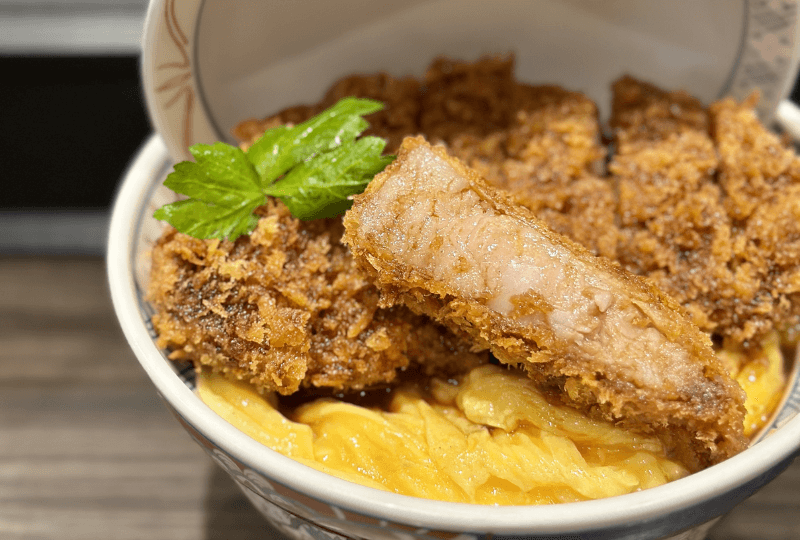
1.16 Eggplant Unagi Donburi
Eggplant Unagi Donburi is a delightful Japanese dish featuring grilled unagi (eel) and tender, braised eggplant over steamed rice. The unagi is glazed with a sweet-savory soy-based sauce, complementing the eggplant’s soft texture. Garnished with green onions and sesame seeds, this flavorful bowl offers a unique, satisfying blend of umami and earthy notes.
1.17 Chukadon
Chukadon is a vibrant Japanese stir-fry rice bowl inspired by Chinese cuisine, featuring steamed rice topped with colorful vegetables, pork, and sometimes shrimp. Coated in a savory, slightly thickened sauce, the ingredients create a harmonious, umami-rich flavor. This hearty, customizable dish is perfect for a quick, wholesome meal packed with textures and tastes.
1.18 Butadon (Pork Donburi)
Butadon, or Pork Donburi, is a comforting Japanese dish showcasing grilled or pan-fried pork slices over steamed rice. The pork is glazed with a sweet-soy sauce, offering a rich, savory flavor. Often garnished with green onions or pickled ginger, this satisfying bowl is a Hokkaido specialty, ideal for a hearty, flavorful meal.
1.19 Crispy Tonkatsu Donburi
Crispy Tonkatsu Donburi is a beloved Japanese dish featuring a breaded, deep-fried pork cutlet (tonkatsu) served over steamed rice. Sliced and drizzled with a tangy, savory tonkatsu sauce, it’s garnished with shredded cabbage or green onions. The crispy texture and juicy pork create a satisfying, hearty meal perfect for comfort food lovers.
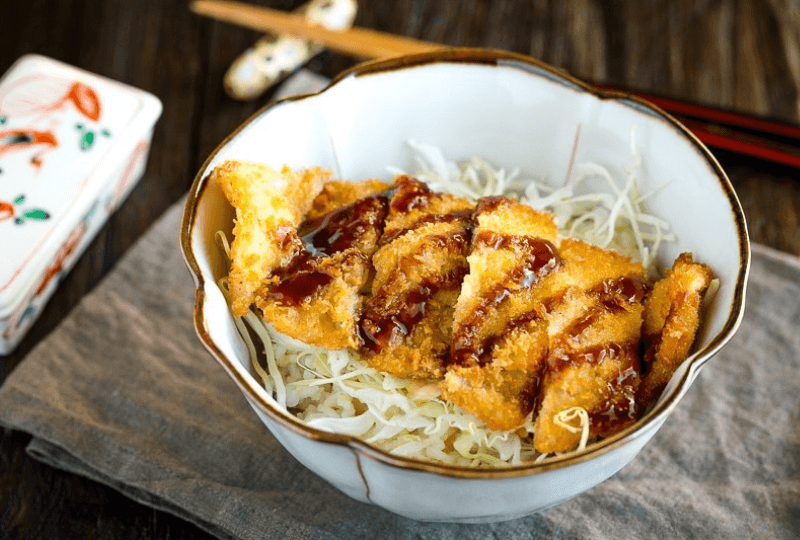
1.20 Tanindon
Tanindon is a classic Japanese rice bowl topped with tender beef and scrambled eggs cooked in a sweet-savory soy-based sauce. Similar to Oyakodon but with beef instead of chicken, it offers a rich, umami flavor. Garnished with green onions or pickled ginger, this comforting dish is ideal for a quick, flavorful, and wholesome meal.
>>> Read more: Top 8 edible mushrooms in Japan
2. Japanese Rice Bowls Recipe Prep Tips
And for now, we want to share with you some prep tips for the Japanese rice bowls of yourself.
– Get ahead
Meal planning is made easy with rice bowl recipes! Make enough bowls for the entire week in advance, or use dinner leftovers for lunch the following day. Before you eat, keep the sauce in a separate container.
– Create additional separate components
Cook extra rice to use in a stir-fry or fried rice dish the following night or make enough sauce to keep on hand the entire workweek. You’ll sprinkle it over everything, even salads, and roasted vegetables.
– Utilize what you have and be inventive
Change the grain, protein, vegetable, or sauce in a recipe if you don’t have all the specified items on hand. Use roasted chickpeas or a hard-boiled egg in place of tempeh, or prepare a batch of quinoa or farro in its place. Make a new sauce if you don’t have everything you need for the one you want!
>>> Read more: How to buy from Japan – Janbox proxy shopping service [Update 2023]
2. Conclusion
These fifteen Japanese rice bowls are a wonderful place to start a journey through the many donburi variants still available in Japan. Do you want to share your favorite donburi with us? Comment below and let us know!
- Website: https://janbox.com
- Email: [email protected]
- Facebook: https://www.facebook.com/janbox.com.en

